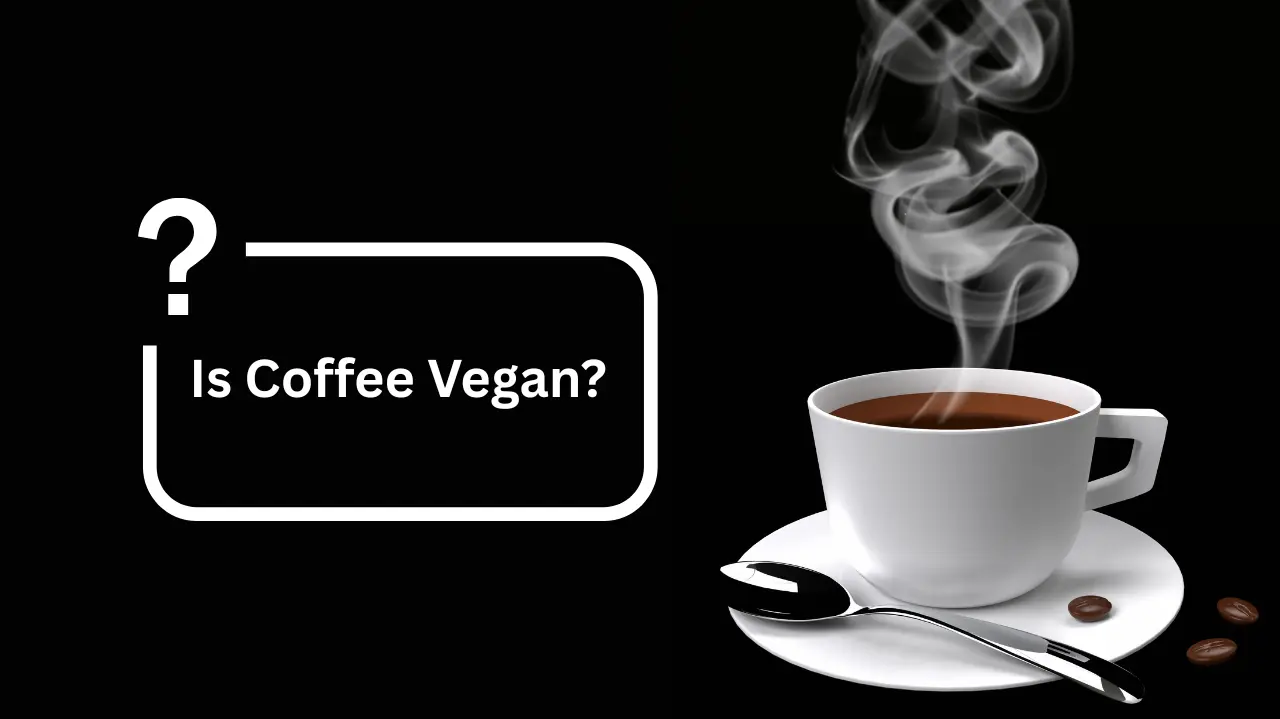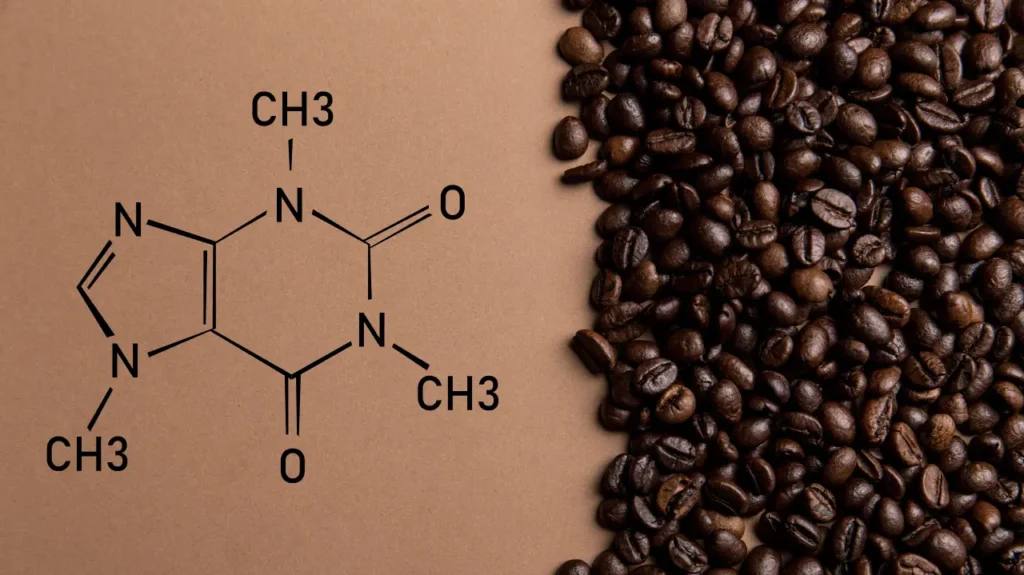Is coffee vegan? Millions sip it daily, yet few pause to ask. At its core, coffee is plant-based, just roasted beans and water.
But your morning cup hides secrets. From milk-laden lattes to sugars filtered through animal bones, vegan pitfalls lurk in plain sight.
Farming methods matter, too: pesticides harm ecosystems, and deforestation displaces wildlife. This guide brews clarity.
We’ll roast myths, pour over ethics, and spill the truth, ensuring every sip aligns with your values. Whether you’re a black-coffee devotee or a froth enthusiast, let’s brew a kinder cup, one ethical bean at a time.
Understanding Veganism and Coffee
Veganism isn’t just skipping steak; it’s saying no to exploiting animals in any form. So, when asking, “Is coffee vegan?” we’re not just checking ingredients.
We’re dissecting every step: How are beans grown? Who harvested them? What’s hidden in your cup?
Coffee beans? They’re seeds from a fruit (yes, coffee “cherries”!). Plants aren’t animals, so beans are vegan by default. But here’s the kicker: the journey matters.
Imagine farms bulldozing forests, killing wildlife habitats. Or workers who are paid pennies and trapped in unfair conditions. Suddenly, that “vegan” label feels flimsy.
Even additives play tricks. Milk and honey are obvious no-gos, but some sugars use bone char, animal bones, to bleach crystals.
And flavoured syrups? They might hide dairy derivatives. Actual vegan coffee cares about ethics beyond the bean: cruelty-free farming, fair wages, and eco-friendly processing.
It’s not just about avoiding harm; it’s about choosing kindness. From soil to sip, every choice echoes.
The Basics
Coffee starts with the bean, a seed in bright red coffee cherries. (Curious about caffeine from beans? Learn does eating coffee beans give you caffeine?).
These cherries grow on shrubs thriving in tropical regions, mainly Latin America, Africa, and Asia.
Two stars dominate your cup: Arabica, loved for its smooth, nuanced flavours, and Robusta, packing a bitter, high-caffeine punch.
Both are plants, so their beans are vegan by nature. But here’s the rub: how they’re farmed can muddy the waters.
Picture vast fields doused in synthetic fertilizers. Those chemicals boost yields and seep into the soil, poisoning insects and nearby wildlife. Even organic farms might use animal manure, a grey area for strict vegans.
Then there’s processing: some farmers dry beans on concrete patios, while others spread them on raised beds. Sounds harmless. But in rare cases, animal glue (yes, from hooves) binds processing equipment. Uncommon, but possible.
The takeaway? Beans are vegan, but their backstory isn’t always black and white.
Shade-Grown vs. Sun-Grown Coffee
Shade-grown coffee is like a wildlife sanctuary. Farmers grow beans under towering trees, mahogany, banana, or avocado, creating a layered ecosystem.
Birds like warblers and hummingbirds nest here, beetles pollinate flowers, and frogs control pests naturally. This method ditches synthetic chemicals, relying on fallen leaves as a natural fertilizer.
Certifications like Bird Friendly (by the Smithsonian) demand at least 40% shade cover, making it a vegan favourite.
But there’s a catch: shaded plants grow slower, yielding fewer beans. Your cup might cost more, but it’s a lifeline for ecosystems.
Sun-grown coffee? Think scorched earth. Forests are cleared for rows of coffee shrubs baking under direct sun. No trees mean no birdsong, just silence.
To combat pests attracted by monoculture farming, growers spray synthetic pesticides (like chlorpyrifos), which poison soil and waterways.
In Colombia and Brazil, sun-grown farms have displaced 2.7 million acres of rainforest since 2000 (per Coffee Kev’s 2022 study).
It’s cheap and abundant, but the hidden cost? Lifeless soil vanished species, and technically vegan coffee but ethically bitter.
Certifications cut through the noise. Rainforest Alliance bans deforestation and child labour, while UTZ focuses on traceability.
Want a truly vegan brew?
Follow the labels, or ask roasters: “Was this grown under trees?”
Additives and Coffee Drinks
While black coffee (just coffee beans and water) is vegan, many popular coffee drinks include additives that are not. Let’s look at common additives and how they affect a coffee’s vegan status.
Common Non-Vegan Additives
Milk: Cow’s milk is the obvious offender. Lattes, cappuccinos, and flat whites often rely on dairy, but swaps like oats, soy, or almond milk save the day.
Chains like Starbucks and Costa now offer 3+ plant-based options. Pro tip: Oat milk’s neutral taste won’t hijack your espresso’s flavor, while coconut milk adds tropical vibes (but might clash with dark roasts).
Creamers: Non-dairy doesn’t always mean vegan. Many contain casein (a milk protein) or sneaky animal derivatives. Always scan labels; terms like “lactose-free” aren’t vegan guarantees.
Sugar: That sweet sparkle? It might come from bone char (yes, charred animal bones) used to bleach refined sugar. U.S. brands are big culprits. Stick to raw, coconut, or “vegan-certified” sugars.
Honey: Bees work hard, but honey’s their labour, not ours. Agave or maple syrup adds sweetness without the buzzkill.
Flavorings: Pumpkin spice latte season? Beware! Some syrups hide dairy or cochineal (crushed beetles for red dye). Stick to natural, plant-based flavours or ask for ingredient lists.
Vegan Coffee Drink Options
Ordering vegan coffee is simpler than mastering latte art:
Black Coffee & Espresso: Always safe if beans are ethical. Double-check; there is no sneaky butter or “added flavours.” (Worried about dental health? Explore is black coffee bad for your teeth?.)
Americano: Just espresso + water. Boring? Maybe. Vegan? Absolutely.
Latte/Cappuccino/Flat White: Swap dairy for oat, soy, or almond milk. Warning: Almond milk can split in acidic brews.
Mocha: Chocolate syrup often contains milk. Ask for dairy-free chocolate (like Ghirardelli’s vegan options) and plant milk.
Iced Coffee: Skip the cream, add almond milk, and sweeten with date syrup. Perfection.
Always specify “vegan” when ordering; baristas aren’t mind readers. Major chains now train staff on plant-based requests, so speak up!
Vegan Milk Guide Table
Milk Type Pros Cons
Soya is widely available and budget-friendly. Splits are in acidic coffee; there is a nutty aftertaste.
Coconut Ultra-creamy, tropical flair Overpowers mild roasts; poor froth
Oat Neutral flavour and barista-approved texture vary by brand (try Oatly!)
Almond Light is subtly sweet and watery in lattes; it splits if overheated.
Ethical Considerations
Beyond the ingredients in your cup, how coffee is grown and processed can have ethical implications that vegans might want to consider.
Labor Practices
Coffee’s bitter truth? Behind every cup, there’s a human hand, often underpaid, overworked, or even a child’s. In Ethiopia and Honduras, kids as young as 12 pick beans for pennies, missing school to fuel their caffeine habits (U.S. Department of Labor, 2023).
Fair Trade certification fights this, ensuring farmers earn a living wage (not just minimum) and banning child labour.
But here’s the gap: Fair Trade sets a floor price, yet droughts or inflation can still leave families struggling.
Veganism isn’t just about animals; it’s about people. Unfair wages trap farmers in poverty cycles, forcing them to clear forests (sun-grown coffee) or use cheap chemicals to survive.
Choosing Fair Trade or Fair for Life (a stricter certification) means your beans fund healthcare, schools, and tools for communities.
For example, cooperatives in Guatemala use premiums to build water wells, freeing women from 4-hour treks for clean water.
But labels aren’t perfect. Some “ethical” brands use vague terms like “responsibly sourced.” Dig deeper: ask roasters if they visit farms or pay above Fair Trade prices.
Direct trade brands like Counter Culture cut intermediaries, paying farmers 25% more.
Environmental Impact
Coffee’s environmental shadow stretches far beyond your cup. Let’s unpack the bitter sips:
Deforestation: Sun-grown coffee devours forests. In Colombia alone, 1.3 million acres of rainforest for coffee farms have been lost since 2000 (per WWF).
That’s like erasing 740,000 football fields of habitat yearly. Jaguars, toucans, and howler monkeys lose homes while carbon sinks collapse.
Worse, drying beans often requires burning wood, and 60,000 acres of trees are axed annually, fueling climate chaos.
Water Guzzler: One cup = 44 gallons of water. Why? Growing beans gulps 80% of that, mostly in arid regions like Ethiopia’s highlands.
Farmers drain rivers, leaving communities parched. Imagine 5 months of showers lost for your morning latte.
Chemical Warfare: Non-organic farms spray chlorpyrifos, a pesticide linked to bee die-offs and fish kills.
These toxins seep into streams, poisoning frogs and birds. Organic farms fight back with compost and ladybugs, but they’re only 10% of global coffee land.
Certifications Matter:
- Rainforest Alliance: Ban deforestation slashes water use by 50%.
- Bird Friendly: Requires 40% shade cover, doubling bird diversity.
- Organic: Zero synthetic chemicals, protecting soil for 30+ years.
Las Lajas coffee farm in Costa Rica switched to organic, reviving scarlet macaw populations. Your choice can spark such wins.
Packaging Concerns
Plastic Pods: Single-use plastic capsules pile up, 29,000 tossed every minute globally. Most end up in landfills, leaking microplastics into soil and oceans.
Check how much caffeine is in a coffee pod for brewing insights.
Even “recyclable” ones rarely are; only 14% get properly processed (EPA, 2023).
Aluminum’s Dirty Secret: Pods labelled “eco-friendly” often use aluminium; however, mining bauxite (aluminium’s source) strips forests in Jamaica, Brazil, and Guinea.
Rivers turn toxic red, killing fish and displacing communities. Refining bauxite also guzzles energy, 17,000 kWh per ton, equal to powering a home for a year.
Compostable Solutions: Brands like Café Joyeux and Grind use plant-based pods (cornstarch or wheat pulp) that break down in 12 weeks.
Look for TÜV Austria OK compost HOME certification; it means safe decomposition in your backyard.
Reusable Fix: Stainless steel pods (e.g., SealPod) slash waste. Fill them with your favourite grounds, rinse, and repeat. One pod = 1,000+ coffees, zero landfill guilt.
Addressing Common Concerns
For vegans, coffee’s hidden cost isn’t just additives; it’s the silent toll on wildlife. When forests fall for sun-grown farms, howler monkeys in Nicaragua and Ethiopia’s endangered Arabica coffee bees lose homes.
Reddit debates rage: Is a “vegan” latte ethical if monkeys died for the beans?
Here’s the hard sip: Coffee farming does harm animals indirectly. But scale matters. Producing one beef burger requires 60 square meters of land, equal to 1,200 cups of coffee (Poore & Nemecek, 2018).
Fischer’s 2018 study found coffee contributes to ~0.006 animal deaths per person annually, mainly insects and small mammals.
Compare that to meat: 72 land animals die yearly per meat-eater (Humane Society).
Yet for strict vegans, any harm clashes with “as far as possible.” Some ditch coffee; others prioritize battles (like ending factory farms).
Middle ground?
Choose regenerative coffee farms like Finca Luna Nueva in Costa Rica to replant forests, creating wildlife corridors for ocelots and parrots.
Certifications like Bird Friendly or Rainforest Alliance slash risks but don’t erase them. Your move? Support brands funding habitat restoration, Grounds for Change plants three trees per bag sold.
The debate boils down to this: Perfection or progress? For most vegans, cutting coffee isn’t “practicable.” But demanding shade-grown, organic beans pushes the industry toward compassion.
Conclusion
So, is coffee vegan? Yes, if you sip with purpose. Black coffee? Always vegan. But the real magic lies in choices beyond the bean. Swap dairy for oat milk, dodge bone-char sugars, and skip honey.
Then, pick beans stamped with Fair Trade, Organic, or Bird Friendly seals. These aren’t just labels but lifelines for forests, farmers, and foxes.
As a coffee pro, I’ll say this: Vegan coffee isn’t a sacrifice. It’s a celebration. Explore single-origin pour-overs, frothy coconut lattes, or cold brews sweetened with date syrup.
Every cup is a chance to vote for kinder farms and wilder skies.
Remember, veganism isn’t about purity; it’s progress. You won’t erase harm, but with each shade-grown sip, you shrink it. So brew boldly, ask questions, and let your coffee fuel more than mornings.




